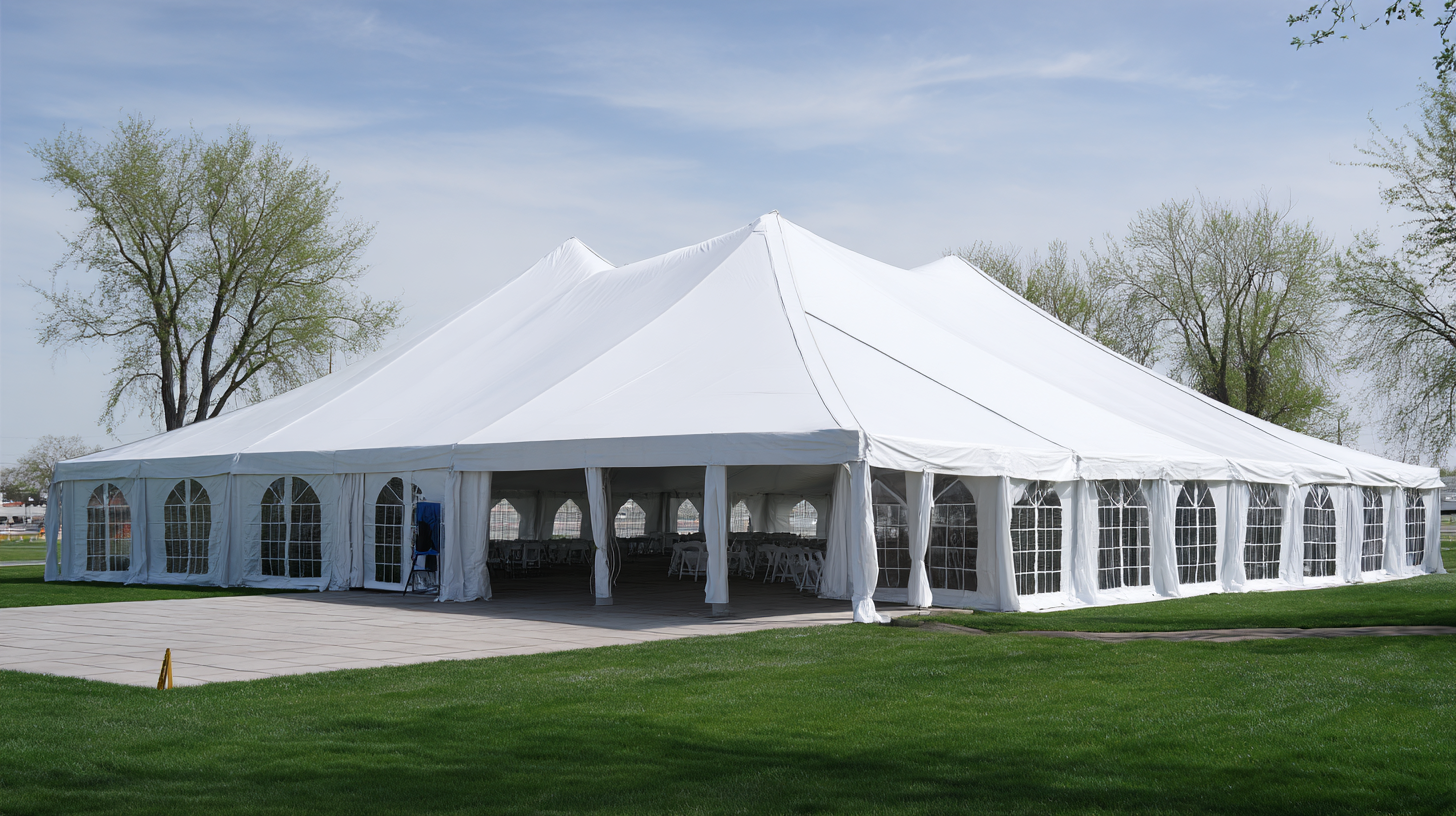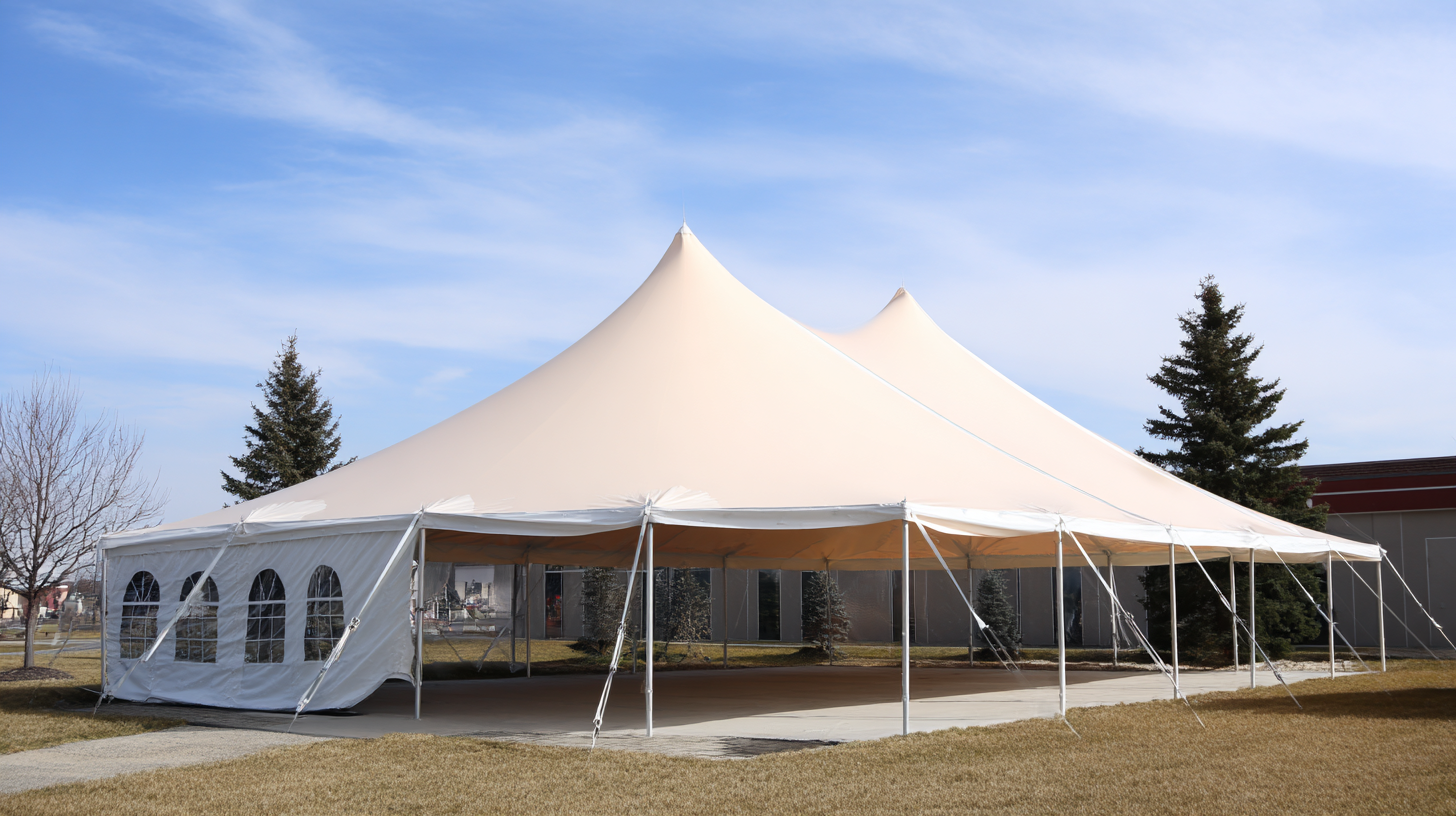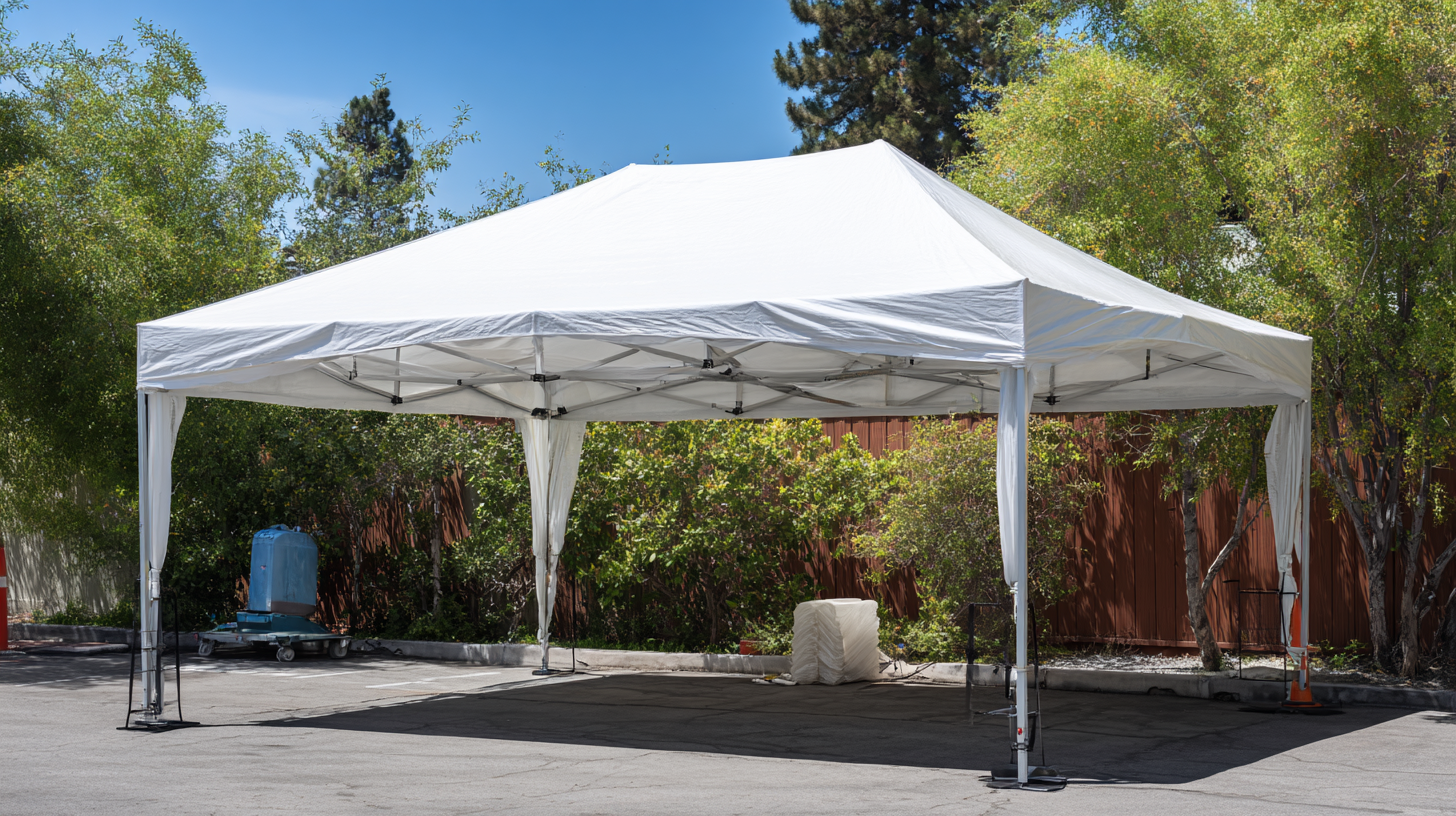Leave Your Message
- E-mail
- Whatsapp
In the world of outdoor events, festivals, and gatherings, ensuring the safety and performance of your equipment is paramount. One essential piece of gear that plays a vital role in providing shade and protection is the tent canopy. Understanding industry production standards for tent canopies not only helps in selecting the best options available but also assures users of durability, safety, and reliability. This blog will explore a comprehensive checklist designed to evaluate tent canopy quality, covering crucial aspects such as material strength, weather resistance, and structural stability. By adhering to these standards, event planners and outdoor enthusiasts alike can safeguard their investments and enhance the overall experience for attendees, fostering a successful environment no matter the occasion.

When it comes to tent canopies, understanding ASTM (American Society for Testing and Materials) standards is crucial for ensuring safety and performance. These standards outline specific criteria that tent manufacturers must meet to guarantee their products can withstand various environmental conditions. For instance, ASTM F3340 provides guidelines for evaluating the flame resistance of tent materials, which is especially vital in event scenarios where safety is a concern. By adhering to these standards, manufacturers can provide assurances to consumers that their tents are not only functional but also safe to use.
Moreover, performance metrics defined by ASTM standards include durability testing, which assesses how well a tent can endure wear and tear from both use and exposure to the elements. This includes resistance to wind, rain, and UV light, which are significant factors that affect the longevity and safety of tent canopies. By implementing rigorous testing protocols, manufacturers can produce tents that meet safety regulations while also performing optimally in diverse settings. Understanding these standards empowers consumers to make informed choices, ensuring that their event canopies meet both their aesthetic needs and safety requirements.
 When selecting the best tent canopies for safety and performance, understanding material tests such as fire resistance ratings and weather resistance standards is crucial. Fire resistance ratings measure how well a material can withstand flames and heat, which directly impacts user safety in case of an emergency. Tents with high fire resistance ratings often come with certifications that ensure compliance with industry standards. It’s essential to check for these certifications when making a purchase, as they can significantly reduce fire hazards.
When selecting the best tent canopies for safety and performance, understanding material tests such as fire resistance ratings and weather resistance standards is crucial. Fire resistance ratings measure how well a material can withstand flames and heat, which directly impacts user safety in case of an emergency. Tents with high fire resistance ratings often come with certifications that ensure compliance with industry standards. It’s essential to check for these certifications when making a purchase, as they can significantly reduce fire hazards.
Weather resistance standards assess a canopy’s ability to withstand elements like rain, wind, and UV rays. Tents designed with quality weather-resistant materials will not only protect against sudden downpours but also endure strong gusts without compromising structural integrity. Always look for canopies with UV protection ratings to safeguard your gathering from the sun’s harmful rays.
Tips: When shopping for a tent canopy, opt for materials that feature both fire and weather resistance ratings. This combination ensures you have a safe and durable option, ideal for various outdoor conditions. Additionally, consider investing in guy lines or stakes that enhance stability during adverse weather, providing peace of mind for your events.
When it comes to tent canopy design, load capacity testing is a crucial component that cannot be overlooked. This testing determines how much weight a tent can safely support, ensuring stability and safety during use. Factors such as wind speeds, snow loads, and additional weights, like lighting and decorations, must be assessed to guarantee that a canopy can withstand real-world conditions. By establishing the load capacity, manufacturers can create canopies that not only meet safety standards but also enhance performance, catering to various environments and events.
Implementing rigorous load capacity testing also helps manufacturers in compliance with industry regulations. As events become increasingly elaborate and involve heavier equipment, the need for reliable testing procedures grows. Not only does this ensure that the tent meets legal requirements, but it also fosters customer confidence in the product's durability. Consumers can rest assured knowing that their canopy has been designed and tested to handle expected stresses, making informed choices about their outdoor setups for both personal and commercial use. In essence, load capacity testing plays a pivotal role in combining safety with functionality in tent canopy design.
When considering a tent canopy, understanding UV protection ratings is essential for ensuring both safety and longevity. UV protection ratings indicate how effectively a canopy material can block harmful ultraviolet rays, which can cause skin damage and accelerate material degradation. A canopy with a higher UV protection rating will not only provide a safer environment for users but also maintain its structural integrity over time. Canopies that are designed with high-quality UV-resistant fabrics are better equipped to withstand prolonged sun exposure, making them a crucial investment for outdoor events.

Moreover, the impact of UV protection ratings extends beyond immediate safety; it also influences the lifespan of the canopy. Canopies that lack adequate UV protection tend to fade, weaken, and ultimately deteriorate faster, resulting in more frequent replacements and higher long-term costs. By opting for canopies with reliable UV ratings, consumers can ensure that their investment will continue to perform well in various weather conditions.
Therefore, understanding and prioritizing UV protection in canopy selection is vital for maximizing performance and enhancing safety in outdoor setups.
In the world of tent manufacturing, adhering to ISO standards is paramount for ensuring quality and safety. ISO, or the International Organization for Standardization, sets specific guidelines that manufacturers must follow to create products that meet global safety and performance benchmarks. For tent canopies, these standards cover a range of aspects, from the materials used to the testing of structural integrity. By complying with ISO standards, manufacturers not only safeguard their consumers but also enhance their market reputation.
Analyzing the importance of these compliance measures reveals their critical impact on the overall functionality of tent canopies. For instance, ISO standards address fire resistance, weather resilience, and durability—key factors that determine how a tent performs in various conditions. When manufacturers align their production processes with these standards, they significantly reduce risks associated with product failure. This attention to detail not only protects users but also ensures that the tents deliver superior performance in camping, events, and emergency situations. Therefore, understanding and implementing ISO standards in tent production is essential for achieving the highest levels of safety and effectiveness.
| Standard | Description | Compliance Level | Last Reviewed |
|---|---|---|---|
| ISO 9001 | Quality Management Systems - Requirements | Certified | 2022-03-10 |
| ISO 13485 | Quality Management Systems for Medical Devices | Pending | 2023-01-25 |
| ISO 14001 | Environmental Management Systems - Requirements | Certified | 2021-07-15 |
| ISO 45001 | Occupational Health and Safety Management Systems | Certified | 2023-04-02 |
| ISO 26000 | Guidance on Social Responsibility | Adopted | 2022-09-18 |
